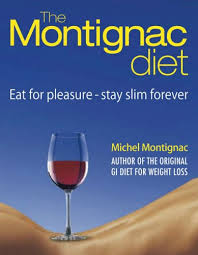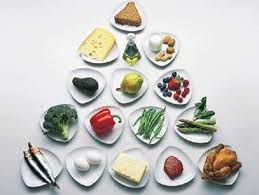 The Montignac Diet was developed by the Frenchman Michel Montignac, a former pharmaceutical-company executive, after his experiences with other diets while trying to lose weight. His method is promoted through popular books such as Dine Out and Lose Weight, and Eat Yourself Slim.
The Montignac Diet was developed by the Frenchman Michel Montignac, a former pharmaceutical-company executive, after his experiences with other diets while trying to lose weight. His method is promoted through popular books such as Dine Out and Lose Weight, and Eat Yourself Slim.
The Montignac Diet appeals to the masses and dominates best-seller lists because it doesn’t count calories and allows luxuries such as dark chocolate and red wine. The idea is that by modifying the type of foods you eat, instead of just reducing the calories, you can stay healthy. Like most good diets, it encourages a permanent change in lifestyle, based on understanding the kind of foods you eat.
 The Montignac Method is kind of a low-carbohydrate diet with a gourmet touch. It also doesn’t hurt apparently having Kylie Minogue associated in the UK.
The Montignac Method is kind of a low-carbohydrate diet with a gourmet touch. It also doesn’t hurt apparently having Kylie Minogue associated in the UK.
Michel Montignac developed it after years of dieting, when he tried following the diet used by diabetics to control blood sugar levels. He had lots of fruits, vegetables and whole grains, while avoiding sugar-filled sweets and cakes. He referenced the Glycemic Index, that ranked carbohydrates on how much they raise blood surgar. He also incorporated low fat, high fibre and food combinations in his diet. It worked very well for him.
In practise, people on a Montignac Diet often end up eating less calories anyway, and therefore losing weght, because the allowed foods are so filling.
Foods are rated according to their glycaemic index, so anything above 50 should be avoided, such as potatoes and beer, but low GI foods like tomatoes, green vegetables, dark chocolate, bread made with unrefined flour, can be enjoyed.
There are two phases to the Montignac Method: Weight Loss and Weight Maintenance. So the first few months are quite strict, particularly in sweets, starches, alcohol and refined carbohydrates, and would logically cause weight loss.
The diet recommends that fats and carbohydrates not be combined in a meal, separated by 3 or 4 hours. Which does rule out donuts and chips, alas. And fruits should not be eaten with other foods.
The diet recommends three meals a day, lots of water between meals, and not to eat late in the evening.
The good side of the diet is that it distinguishes fats, so good fats like olive oil and fish oils are allowed, as are dairy products, and exercise.
The downside (according to Rosemary Stanton) is that it is based on the idea that the carbohydrates that raise blood glucose levels and stimulate over-production of insulin, are supposed to cause fats to be stored in your body, and also the idea that surplus fat can be excreted. Yes, many diabetic people are obese, but whether excess insulin is the cause for fat storage is the issue. This flies in the face of many current nutritionists’ recommendations that say the only true way to lose weight is by restricting fat intake.
A very interesting article at Recreation Services covered the diet duel by Professor Dumesnil of Laval University’s Quebec Heart Institute. A 1998 study found that the Montignac Method reduced waist measurements, stabilized cholesterol, didn’t leave you hungry, and reduced factors associated with cardiovascular risk.
The Montignac Method contains much theory also found in Suzanne Somers’ Eat Great Lose Weight and Sugar Busters Diets, although those diets came later.